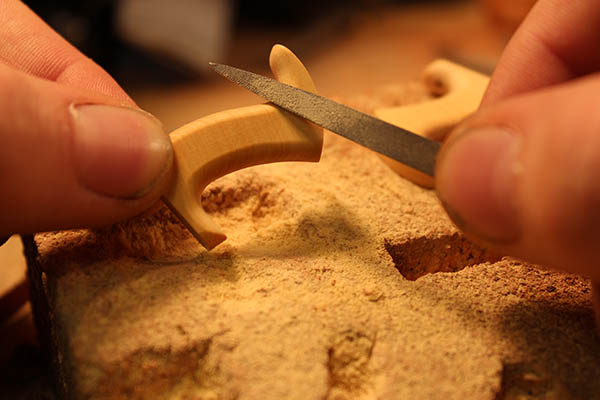
After graduating from college with an art degree, Marco Terenzi spent a brief time making large, sculptural items – which would lead, he realized, to “a career path of selling to galleries.” At the same time, he was making metal miniatures of his items “for fun. I figured I liked doing it so much, I’m just going to keep making miniature things.”
Marco’s specialty in miniature things just happens to be miniature woodworking hand tools. Built to 1/4 scale, his tools are not only miniature, but functional – although, he says, he sells them as collectibles: “I don’t know if those tiny screws would stand up to daily use. “
In his own possession, however, is a jack plane measuring a little over 3-1/2 inches long that Marco says he uses “all the time. I bring it to shows and let people take shavings with it.”
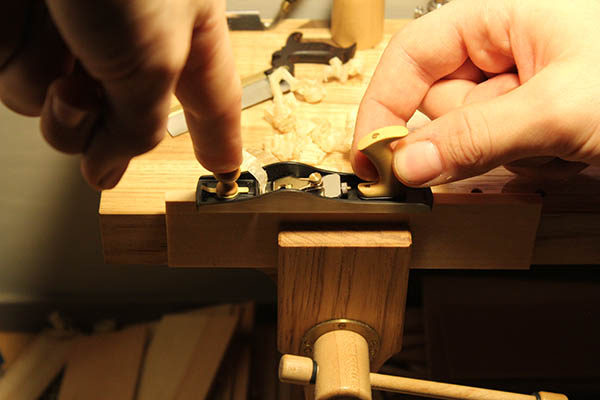
His miniature tools are, in fact, created just like their larger counterparts, with heat-treated tool steel. “They’re made the same way as the real ones,” Marco said. For the jack plane, which has 16 parts, “It took me five months to make 20. I machined every little screw, everything. I had to make 20 jigs and fixtures to make it. I have to make all the pieces to scale to be able to pull it off; that’s what makes it super fun for me.”
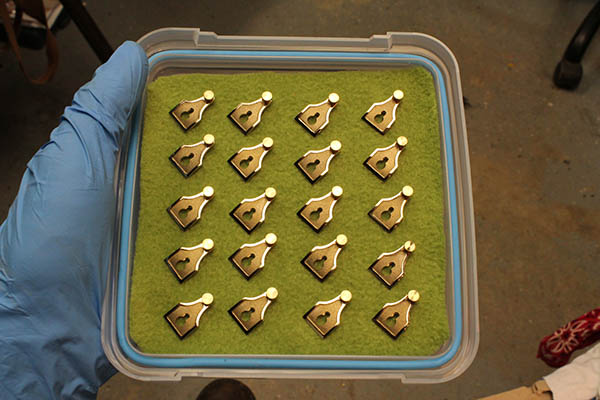
In fact, in order to make his collectible miniature tools, Marco often has to make miniature tools that he will use in the building process. For example, he might need to make a small chisel out of tool steel. “I could have four or five hours into a chisel before I ever start cutting wood with it,” he said. “There’s a balance of making tools to keep and use, and ones to sell.”
The people who are buying Marco’s tools, he says, divide roughly into two groups: people who have collected miniature tools in the past, and new collectors – often those interested in antique and/or rare tools – who appreciate the time and effort that goes into them. “Since I makes less than 20 of everything, mine would be considered rare tools,” Marco said. He’s not selling to the miniatures world — people who create scenes in dollhouses, for example. The common scale there is 1/12, not Marco’s 1/4.
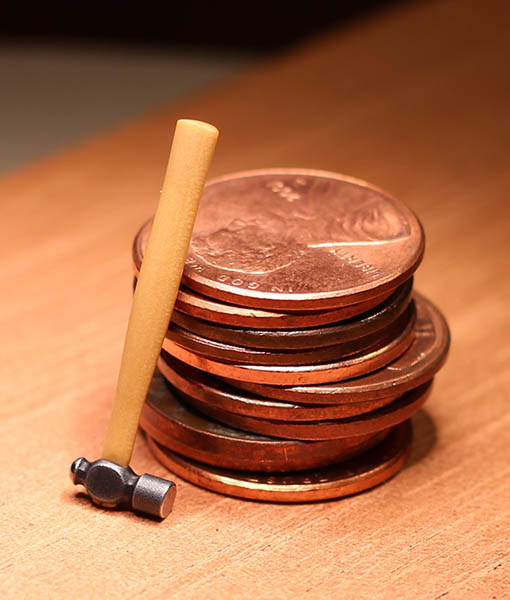
But he has encountered “mostly older guys” who have made miniature tools in the past, and has acquired tips from them, most notably spending a week in the shop of Paul Hamler, who has been making miniature tools since the 1980s. “I’m kind of keeping the craft alive,” Marco said.
Since he was a kid, Marco said, he has been interested in how things are made. Also, “I like working with jewelry size things. Making miniatures are a combination of everything I love: small things, tools, woodworking.”
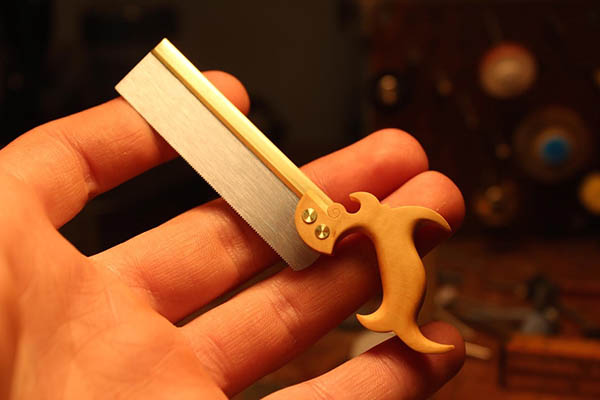
His first introduction to woodworking came as a boy of seven or eight, when he built model airplanes out of balsa wood kits from the hobby store. At age 10, he said, his parents were nice enough to get him a Delta benchtop lathe for Christmas. (He still uses it.) And, during his college “Art Furniture” program, which mostly had a sculptural focus, there was what Marco described as a “crash course” on woodworking.
“I quickly became more fascinated with the tools,” he said. “I like the tools just as much as working with them. With tools, what they’re capable of depends on who’s holding them and using them.”
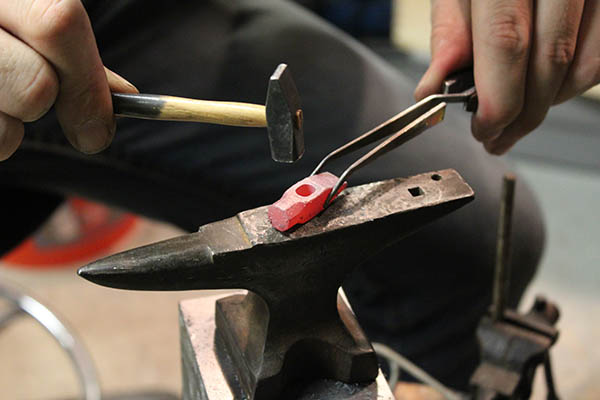
In his own case, “There’s a balance of making tools to keep and use and ones to sell. In a perfect world, I would only make one or two of each thing and move on, but I have to make a profit. The list of stuff I want to make is about 80 years long.”
Although past miniature tool makers have often focused on replicating rare items, Marco’s interest is in the more commonplace tools. “I just like traditional design,” he said. “I do keep up with a lot of the new stuff, and in the future, I want to make more miniatures of tools that are common these days,” he said, like the jack plane, which he describes as “super popular in the last 10 years for the hand tools user.”
When he takes on a project, Marco said he finds encouragement by posting his process on Instagram and receiving supportive comments. “Otherwise, I don’t talk to people,” as he’s ensconced in his shop working, Marco said.
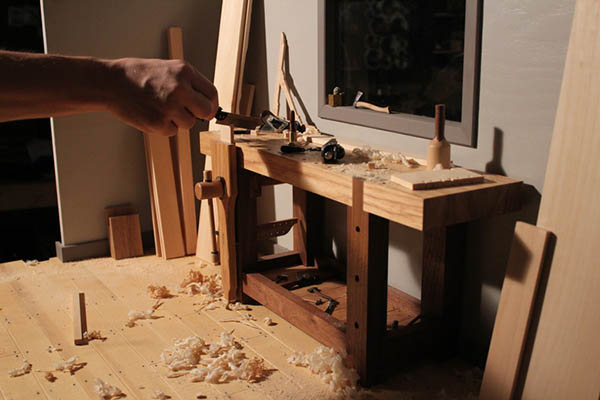
One of his biggest safety concerns, Marco said, is that “The tools I use are super small. I have to watch for eyestrain from looking at something too small for too long. I do use a stereomicroscope for a lot of my work, so I can see it without too much eyestrain.”
“I think the microscope is what got me to the next level,” Marco said, noting that he finds it useful during the finishing process of his tools. Marco’s preferred finish is “shellac, diluted down super-thin, many coats, like a French polish.” He also waxes everything, metal and wood alike, with Renaissance Wax.
And, in fact, a large portion of Marco’s miniature woodworking tools are, indeed made out of metal, and require his metalworking skills more than woodworking. “I guess I’m more fascinated with the idea of woodworking than the act of it,” he said.





